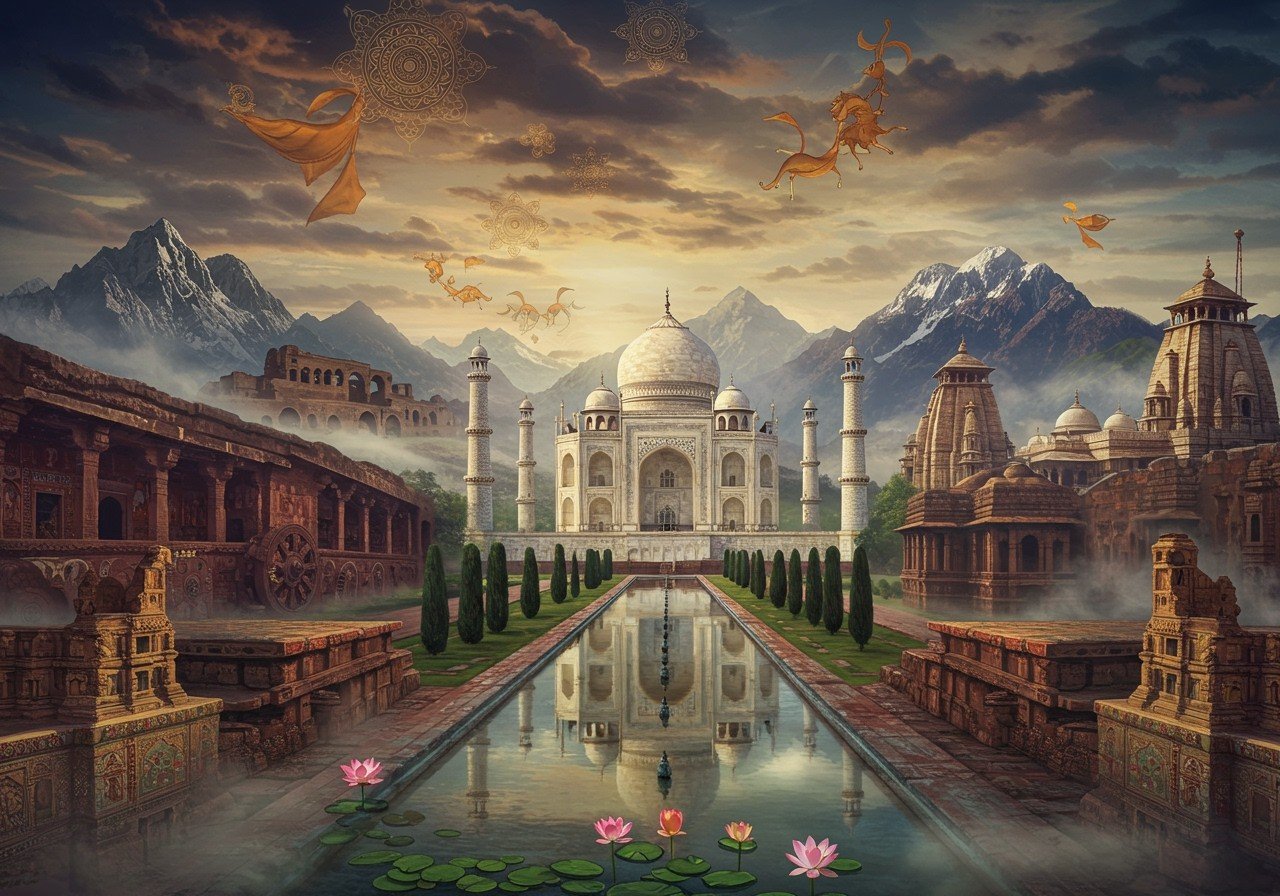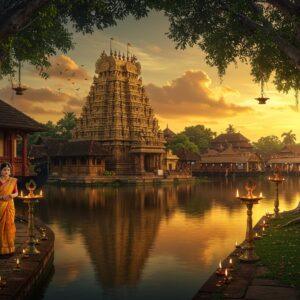
Embark on a culturally enriching journey through India’s World Heritage Sites, recognized by UNESCO for their outstanding universal value. This state-by-state guide explores the diverse cultural, historical, and natural landmarks that define India’s rich heritage. Understand the importance of World Heritage Sites, which are landmarks or areas selected by UNESCO for their cultural, historical, scientific, or other forms of significance. These sites are legally protected by international treaties. Discover which states boast the highest number of these prestigious sites and which, intriguingly, have none.
World Heritage Sites in India by State
India is home to 43 UNESCO World Heritage Sites as of 2024, spread across its vast landscape. Maharashtra stands out with five remarkable sites, including the Ajanta and Ellora Caves, renowned for ancient Indian art and religious expression. The Victorian and Art Deco Ensemble of Mumbai showcases unique architectural styles from different eras. Rajasthan boasts four significant sites, including architectural marvels like the Hill Forts and the biodiversity-rich Keoladeo National Park.
In Tamil Nadu, explore the ancient Great Living Chola Temples, showcasing impressive Dravidian architecture, and the Group of Monuments at Mahabalipuram, known for its rock-cut sculptures. Uttar Pradesh is home to the iconic Taj Mahal, a testament to Mughal architectural brilliance, and Fatehpur Sikri, a historical city reflecting Akbar’s reign. Each state presents a unique facet of India’s cultural and natural heritage.
Discovering India’s UNESCO Sites State by State
India’s World Heritage Sites, recognized by UNESCO, offer a deep dive into the country’s rich past. These 43 sites are categorized as cultural (35), natural (7), and mixed (1), with each state contributing its unique chapter to India’s historical narrative. Let’s embark on a journey through these states and uncover their treasures.
Maharashtra: A Cultural Hub
Maharashtra leads with five UNESCO sites. The Ajanta and Ellora Caves, with their intricate carvings, showcase ancient Indian art and religious beliefs. The Elephanta Caves, with their rock-cut sculptures, are another significant landmark. Mumbai’s Chhatrapati Shivaji Maharaj Terminus exemplifies Victorian Gothic Revival architecture, while the city’s Victorian Gothic and Art Deco Ensembles display a blend of architectural styles.
Rajasthan: Royal Grandeur and Natural Beauty
Rajasthan’s four UNESCO sites reflect its regal history and diverse landscapes. The Hill Forts embody valor and architectural brilliance. Keoladeo National Park, a haven for birdwatchers, showcases rich biodiversity. Jaipur’s Jantar Mantar highlights astronomical prowess, and the city itself is a heritage site, known for its planned layout and vibrant past.
Gujarat: Architectural and Archaeological Treasures
Gujarat’s heritage is showcased through its diverse sites. Rani ki Vav, the Queen’s Stepwell, is an architectural marvel. The Historic City of Ahmedabad reflects a bygone era. Champaner-Pavagadh Archaeological Park blends history and spirituality, while Dholavira, a Harappan city, adds archaeological significance.
Tamil Nadu: Ancient Temples and Coastal Heritage
Tamil Nadu is home to architectural and sculptural wonders. The Great Living Chola Temples are a testament to ancient Dravidian architecture. Mahabalipuram, with its rock-cut sculptures and temples, offers a captivating coastal heritage experience.
Uttar Pradesh: Mughal Majesty
Uttar Pradesh boasts iconic Mughal structures. The Taj Mahal, an embodiment of love and Mughal architecture, is a global icon. Fatehpur Sikri’s red sandstone structures narrate the story of Akbar’s reign. Agra Fort, with its impressive walls and palaces, showcases the grandeur of the Mughal emperors.
States Awaiting Recognition
States like Nagaland and Mizoram, despite their rich cultural heritage and natural beauty, do not yet have UNESCO-designated sites. Efforts are ongoing to highlight their potential for recognition.
Cultural Significance and Preservation
India’s World Heritage Sites are vital for preserving traditions and histories. They promote tourism, contributing to local economies, and are crucial for understanding India’s diverse cultures and religions. However, preserving these sites presents challenges, including pollution, climate change, and the impact of tourism. Balancing development with conservation is a continuous effort.
Poojn.in: Your Companion for Heritage Site Visits
Enhance your spiritual journey at India’s heritage sites with authentic puja items from Poojn.in. Whether you’re visiting ancient temples, Buddhist monuments, or exploring historical caves, Poojn.in offers a wide range of traditional products to enrich your experience. Explore our collection today.
- Temple Essentials: Complete puja thalis, copper and brass items, bell sets, dhoop, and agarbatti.
- Buddhist Offerings: Meditation accessories, incense sticks, prayer beads, and offering bowls.
- Hindu Rituals: Gangajal, sacred threads, kumkum, roli, and traditional puja attire.
- Cave Temple Needs: Portable diya sets, travel puja kits, incense holders, and small offering containers.
Poojn.in ensures authenticity, convenience, and secure pan-India delivery for all your puja needs.
Embracing India’s Heritage for Future Generations
India’s World Heritage Sites are more than just landmarks; they are living narratives etched in stone and nature. By exploring these sites, we connect with the stories and traditions that have shaped our nation. Preserving these treasures ensures that future generations can experience the magic of India’s rich heritage. Let’s cherish and protect these timeless legacies.
Sakha by Poojn
Paita by Ashim Banerjee
Maa Lakshmi Murti


